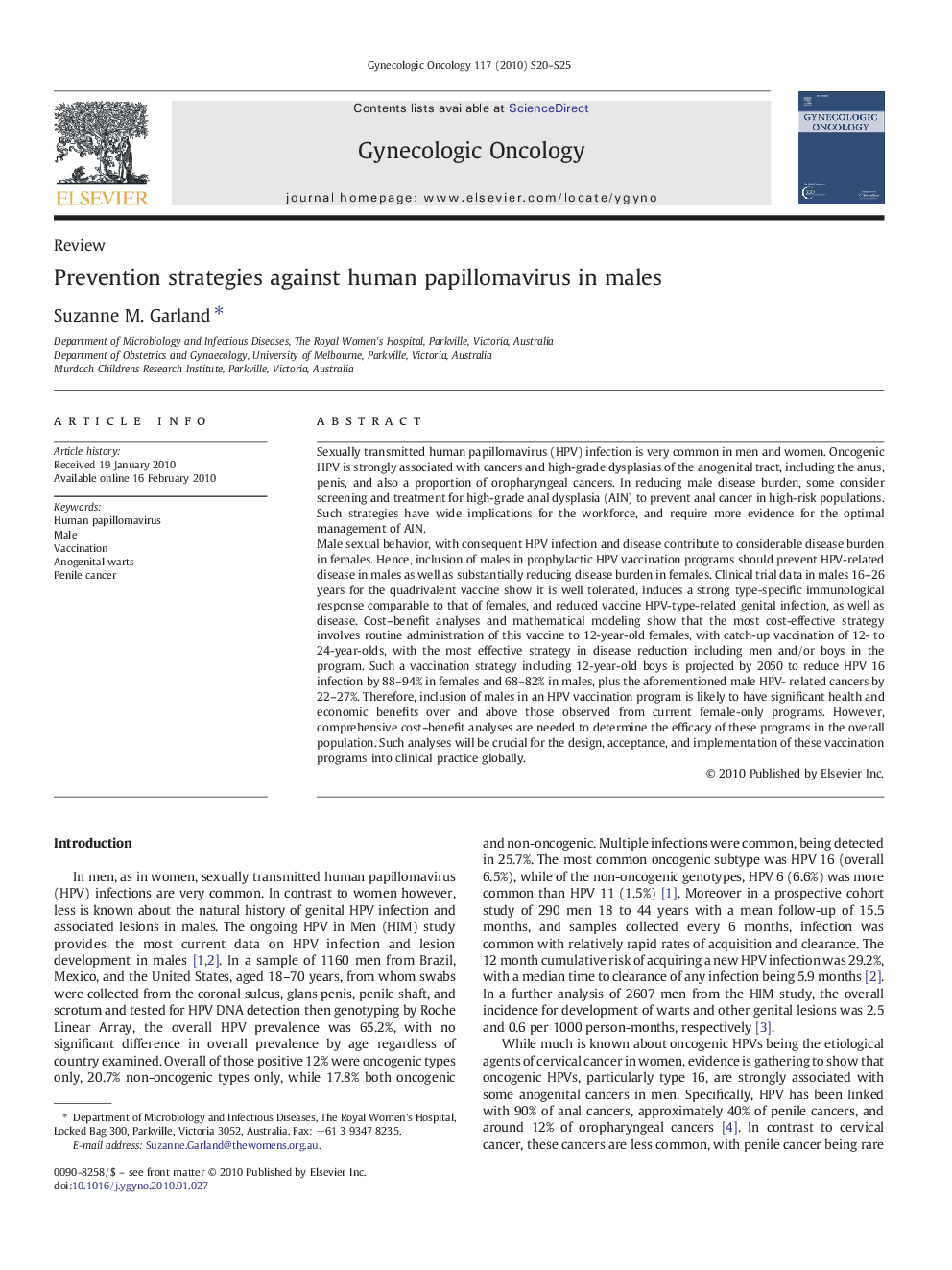| کد مقاله | کد نشریه | سال انتشار | مقاله انگلیسی | نسخه تمام متن |
|---|---|---|---|---|
| 3943131 | 1254075 | 2010 | 6 صفحه PDF | دانلود رایگان |

Sexually transmitted human papillomavirus (HPV) infection is very common in men and women. Oncogenic HPV is strongly associated with cancers and high-grade dysplasias of the anogenital tract, including the anus, penis, and also a proportion of oropharyngeal cancers. In reducing male disease burden, some consider screening and treatment for high-grade anal dysplasia (AIN) to prevent anal cancer in high-risk populations. Such strategies have wide implications for the workforce, and require more evidence for the optimal management of AIN.Male sexual behavior, with consequent HPV infection and disease contribute to considerable disease burden in females. Hence, inclusion of males in prophylactic HPV vaccination programs should prevent HPV-related disease in males as well as substantially reducing disease burden in females. Clinical trial data in males 16–26 years for the quadrivalent vaccine show it is well tolerated, induces a strong type-specific immunological response comparable to that of females, and reduced vaccine HPV-type-related genital infection, as well as disease. Cost–benefit analyses and mathematical modeling show that the most cost-effective strategy involves routine administration of this vaccine to 12-year-old females, with catch-up vaccination of 12- to 24-year-olds, with the most effective strategy in disease reduction including men and/or boys in the program. Such a vaccination strategy including 12-year-old boys is projected by 2050 to reduce HPV 16 infection by 88–94% in females and 68–82% in males, plus the aforementioned male HPV- related cancers by 22–27%. Therefore, inclusion of males in an HPV vaccination program is likely to have significant health and economic benefits over and above those observed from current female-only programs. However, comprehensive cost–benefit analyses are needed to determine the efficacy of these programs in the overall population. Such analyses will be crucial for the design, acceptance, and implementation of these vaccination programs into clinical practice globally.
Journal: Gynecologic Oncology - Volume 117, Issue 2, Supplement, May 2010, Pages S20–S25